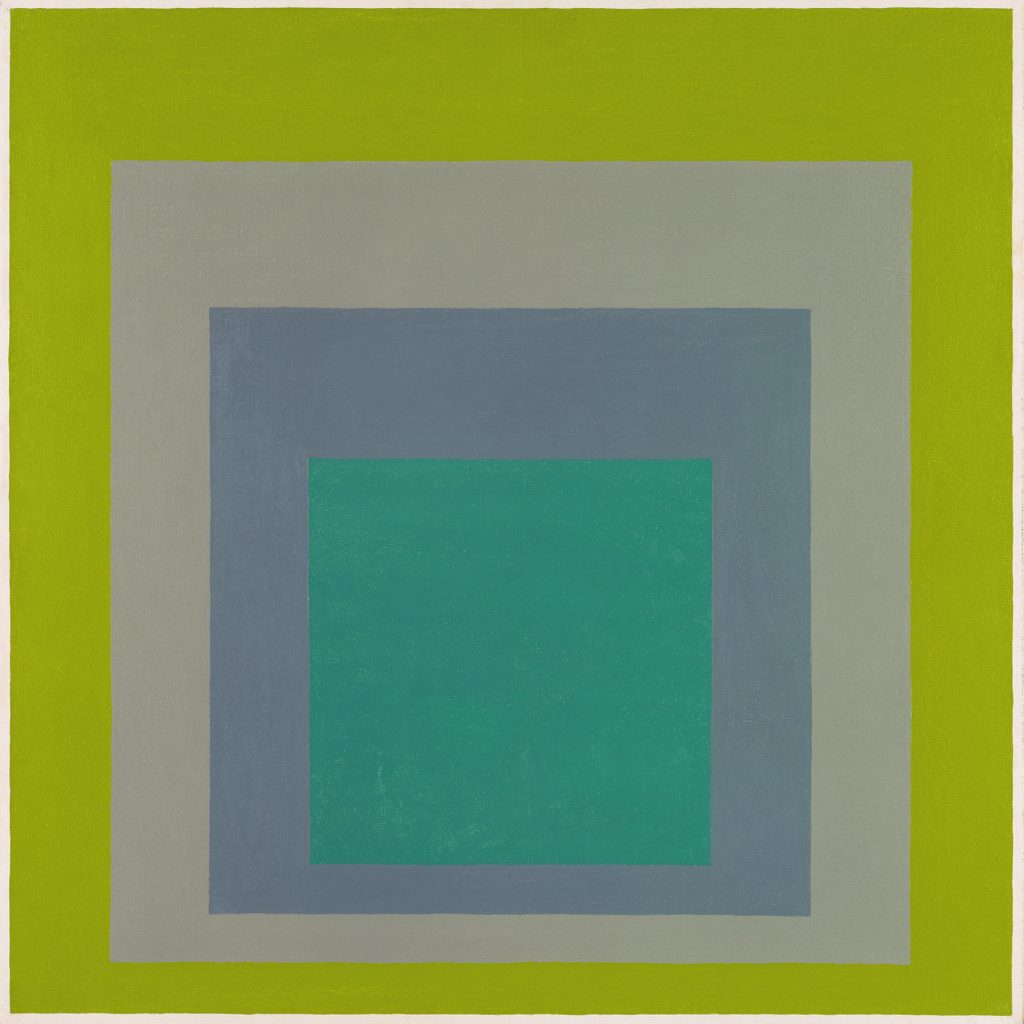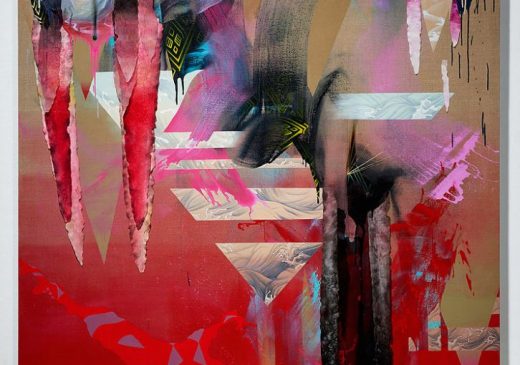Josef Albers (artist)
On the recommendation of Philip Johnson at New York’s Museum of Modern Art, organizers at Black Mountain...
view artistAssuming the role of curators, student teams will create mini-exhibitions with wall labels for a new North Carolina Gallery at the North Carolina Museum of Art. Students will explore the concept of citizenship by creating criteria for an artist’s inclusion in the gallery.

Study for Homage to the Square: "High Spring", by Josef Albers
1. Ask: What makes someone a North Carolinian? Discuss the question briefly with the class, and tell students to keep that question in mind. Then pose the following scenario:
As curators at the North Carolina Museum of Art, you have been charged to create a special gallery focusing on North Carolina art and artists. You must now decide which artists to include in this gallery. Since several artists in the Museum’s collection have associations with North Carolina but did not necessarily spend a majority of their lives here, you must decide if each artist is qualified to be included in the gallery.
2. Using Josef Albers as an example, model some of the issues students should consider when deciding to include an artist. What is a citizen? What does it mean to be a citizen? Are you born a citizen or can you become one? What, if any, difference is there in being a citizen of your hometown, state, or country? Questions such as What time period is this artist from? What important events occurred during the artist’s life? and How is North Carolina reflected in the artist’s work or life? can be used to discuss how an artist’s life and chosen subject matter are connected to North Carolina.
You may suggest students create a worksheet or note cards with this information to use in their assessments:
Artist: Josef Albers
Place of birth: Germany
Period of residence in N.C.: 1933–1949 (16 years)
Reason for residence: Art professor at Black Mountain College
North Carolina historical significance/Subject matter: Black Mountain College was founded during the Great Depression. The school brought world-renowned artists to the mountains of North Carolina. Albers, a refugee from Nazi Germany, guided the art program at the school for 16 years. He created work and led student exercises that would contribute to his research on color relationships as published in Interaction of Color.
Call a class vote to determine whether Albers should be included in the gallery.
3. Group students into curatorial teams of approximately four each. Instruct the teams to create a list of criteria for determining whether the following artists should be included in the gallery: John Biggers, John Beerman, Romare Bearden, and Robert Rauschenberg. If team members think that an important North Carolina artist is not included in the Museum’s collection, they can suggest works by that artist to purchase. In setting their criteria, students should reconsider the question What makes someone a North Carolinian? and the questions in Step 2.
4. Designate areas of the classroom for the groups to use as exhibition space. Have each team create a mini-exhibition of its proposed North Carolina Gallery featuring the works of artists chosen for inclusion. Each exhibition should include the following elements.
Introductory panel: Text should explain the subject matter of the gallery, the group’s decision-making process, and the list of criteria the students created.
Wall labels for each work of art: Labels should include information about the significance of the work of art and why the artist was included in the gallery.
5. Have the students visit each team’s exhibition. Have each team available to answer questions. As a class, discuss student responses to the different exhibitions, and compare the criteria used by the different groups. How did each group approach its task? What are some challenges that museum curators face in their job? Did viewing the other teams’ exhibitions change your mind about works your group selected? What different views were presented about citizenship?
As a conclusion, have students write a response to the question How would you answer the question about what makes someone a North Carolinian differently now than you did at the beginning of the project?
Written by Jill Taylor, NCMA Educator
Vocabulary
curator
gallery
citizen
exhibition
wall label
Materials
Foamcore can be used as a support for the labels.
Links
On the recommendation of Philip Johnson at New York’s Museum of Modern Art, organizers at Black Mountain...
view artistRobert Rauschenberg was a synthesizing innovator. As a student at Black Mountain College in western North...
view artistMarch 7, 2020 – February 14, 2021
view exhibition